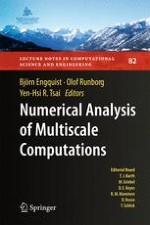2012 | Book
Numerical Analysis of Multiscale Computations
Proceedings of a Winter Workshop at the Banff International Research Station 2009
Editors: Björn Engquist, Olof Runborg, Yen-Hsi R. Tsai
Publisher: Springer Berlin Heidelberg
Book Series : Lecture Notes in Computational Science and Engineering
